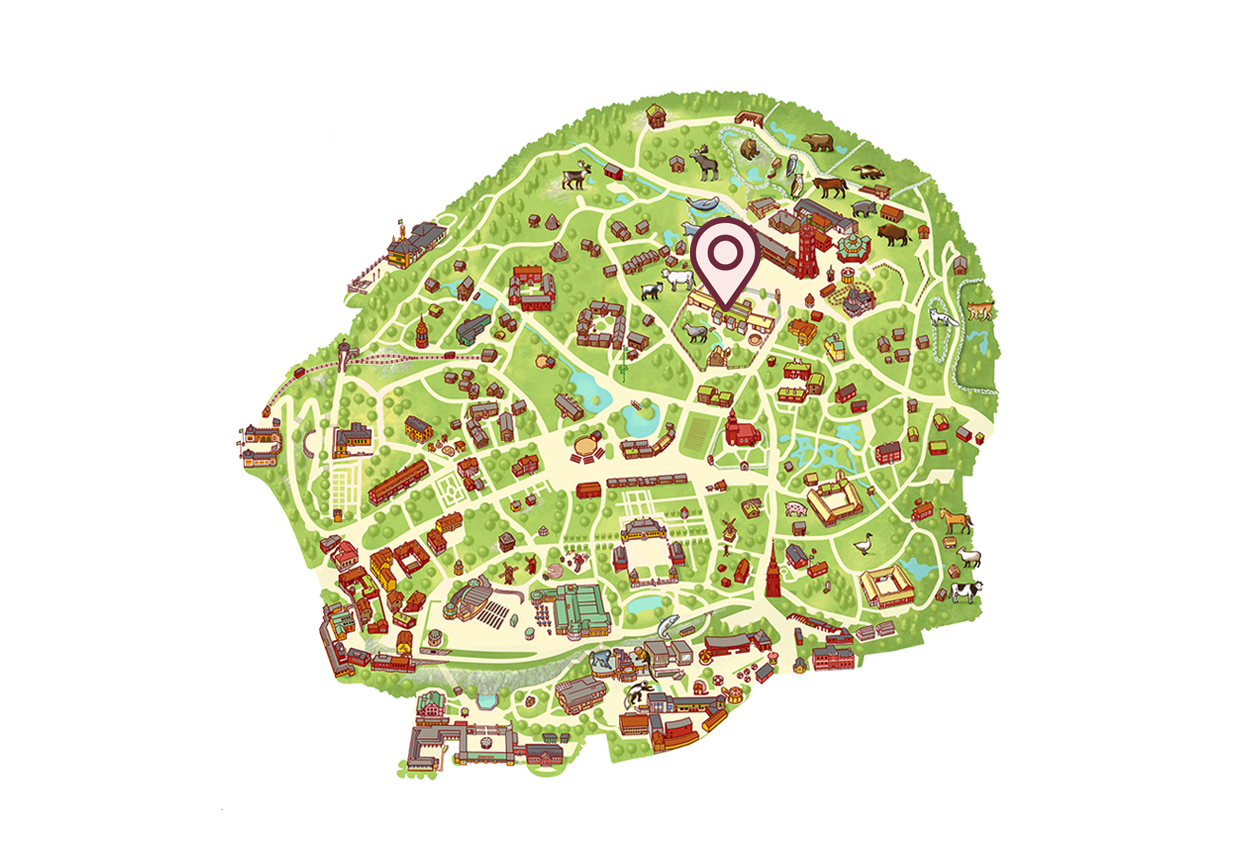- See and do
- The Zoo
- Animals at Skansen
- European green toad
European green toad
The European green toad is Sweden’s most threatened creature. It is easily recognisable, thanks to its spotted back in contrasting colours. The toad can quickly change colour if it moves from one surface to another.
-
The situation for the European green toad in Sweden is extremely serious, and the few remaining populations are in need of protection. Just like all other amphibians, European green toads are protected by law. You must not harm, kill or catch them. It is also forbidden to damage their eggs or larvae, or to remove them from the water.
Many threats
The European green toad was previously fairly common in coastal areas in southern and southeastern Sweden. There are many reasons for the species’ decline, including eutrophication and overgrowth of previously nutrient-poor open land, lower groundwater levels and draining spawning waters, poorer water quality, and the introduction of fish and crayfish into many small bodies of water.
-
About the European green toad
Scientific name:Bufotes viridis
Length:5–8.5 cm long (occasionally 10 cm)
Lifespan:Up to 7 years in the wild, 8–9 years in captivity
Eggs:The female lays up to 15,000 eggs
Eats:Insects such as ants, beetles, spiders and other small creatures
-
Subsequent to inventorying and restoration work at many habitats, breeding and reintroduction have taken place at a large number of locations within the species’ previously known distribution area. However, the results have not been as successful as for many other threatened amphibians.
Spotted, and can change colour
The European green toad is easy to recognise with its contrasting markings. The abdomen is light and the back is a mottled green with large, distinct, irregular patches on a light grey to greyish-brown or pale olive background. There are also many smaller warts on the back, which are usually reddish in colour. The pupil is horizontal and the iris is green or greenish-yellow. The toad can quickly change colour if it moves from one surface to another.
Eats insects
The toad feeds on insects and other arthropods that it finds crawling on the ground or in ground vegetation. Beetles and ants are common prey.
Hibernates in the winter
The European green toad is generally a continental species that requires warm summers with high water temperatures in order to reproduce and thrive. It spends the whole of the winter hibernating in a frost-free hiding place. The species is primarily a morning and evening animal, and spends the daytime hiding in silence.
Thrives in areas with brackish water
It is usually found on land with relatively high levels of salinity. In Sweden, it thrives in areas with brackish water. Typical biotopes are coastal wetlands at river mouths with dense reed beds, but the species also lives along flat rocky coasts with shallow waters.
Clings to the female’s back
The mating season begins as soon as the spawning waters have warmed up in April. The males arrive at the spawning site first, about a week before the females. There, they lie on the surface of the water and make a call similar to that of the curlew, but higher pitched.
Spawning takes place in May and June, and the spawning waters can be anything from small, dirty puddles to clear bays. However, the waters must be fairly shallow so that they can warm up quickly and to a relatively high temperature. Mating involves the male clinging to the female’s back by holding onto her armpits. The 7,000–15,000 eggs are then laid in two black jelly-like strings in the water, with each being three to four metres long. After a few days, the eggs begin to hatch. Around three months later they will have become a toad that is 12–19 mm in length.
In Sweden, the European green toad is now only found in a few areas in Skåne and Blekinge, and on Öland and Gotland.
-
Conservation work
Practical efforts to bring back the European green toad include:
- creating suitable locations for toads to overwinter, such as mounds of stones,
- increasing the number of cows grazing on coastal meadows along the Baltic Sea,
- creating an open, water-rich landscape by removing vegetation from old pastures,
- creating bodies of water where toads can spawn, potentially by digging small ponds with an excavator.
The European green toad is classified as ‘Vulnerable’ on the Swedish Species Information Centre’s red list.
You can find the European green toad here
